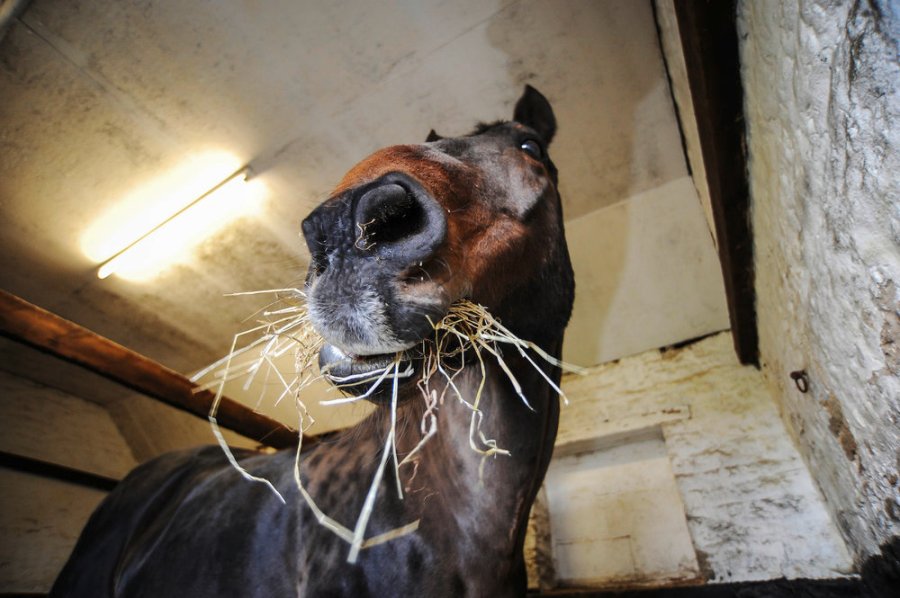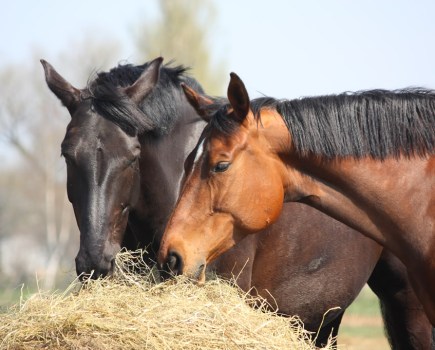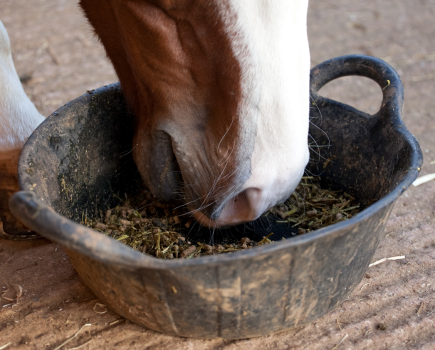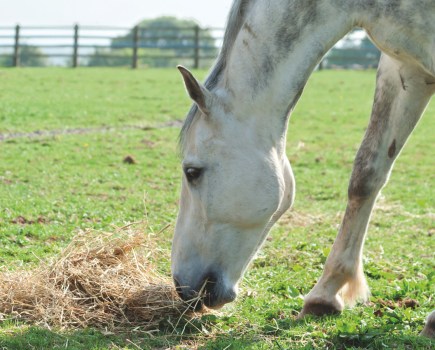Ulcers, often referred to as equine gastric ulcer syndrome (EGUS), usually occur as a result of the stomach lining being exposed to gastric acid over a long period of time. The best way to protect this lining is to limit its exposure to gastric acid. Nature’s way of doing this is by the buffering action of saliva, which is produced when your horse chews. This is why allowing him to graze for the bulk of each day is so beneficial.
To explain gastric ulcers, think of your horse’s stomach as divided into two regions, the upper non-glandular region (where food enters the stomach), and the lower glandular region (where hydrochloric acid is produced). Although the lower glandular region is constantly exposed to acid, lots of mucus offers protection against lesions (or damage to the stomach). Any lesions found here are unlikely to be diet-related. However, the upper region is prone to lesions as a result of gastric acid splashing onto the unprotected stomach lining. If your horse hasn’t eaten for several hours, so no saliva is being produced, his stomach pH will drop. This means that if he is stabled for long periods on restricted rations of forage he’s more likely to develop gastric ulcers as there’s nothing protecting his stomach from the acid it produces.
Exercise can also increase gastric acid production, and in turn increases pressure in your horse’s abdomen. When not enough forage is fed, gastric acid can splash onto the upper region of the stomach, causing ulcers.
Fix it with fibre
The key to reducing the risk of ulcers is to feed lots of forage, so your horse produces lots of saliva to act as a buffer in his stomach. As mentioned before, you should feed no less than 1.5% of his bodyweight in forage per day, while restricting his starch intake to less than 2g per kg of his bodyweight, per day.
To do this effectively, you need to calculate your horse’s bodyweight, and you can work this out in kgs by using a weightape. Once you’ve done this, look at how much starch is in his feed (this information will be on the the bag).
It also helps to add chopped fibre to any bucket feeds to help extend his eating time. Alfalfa is particularly useful for this as its high protein and calcium content helps to provide a further buffering effect against the potentially harmful stomach acid.
Feeding plenty of forage will help to provide a protective mat on top of the contents of your horse’s stomach, helping to prevent gastric acid splashing on to the upper stomach region.
Another thing to consider is the length of time your horse is left without fibre. Don’t leave him for more than six hours without any hay, haylage or grass, and allow him access to it before exercising to help maintain the protective fibre ‘mat’ in his stomach.
Don’t miss the latest issue of Your Horse Magazine, jam-packed with training and veterinary advice, horse-care tips and the latest equestrian products available on shop shelves, on sale now.









